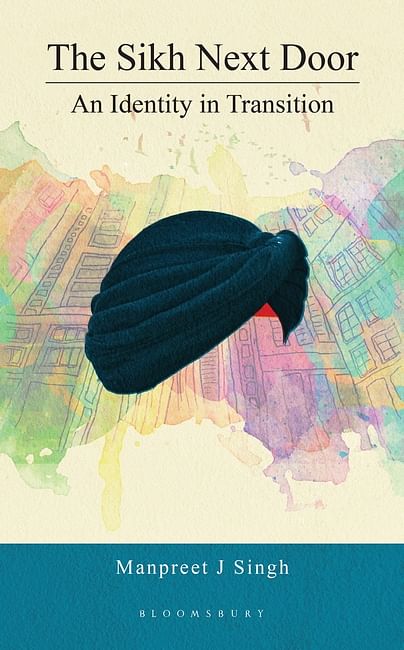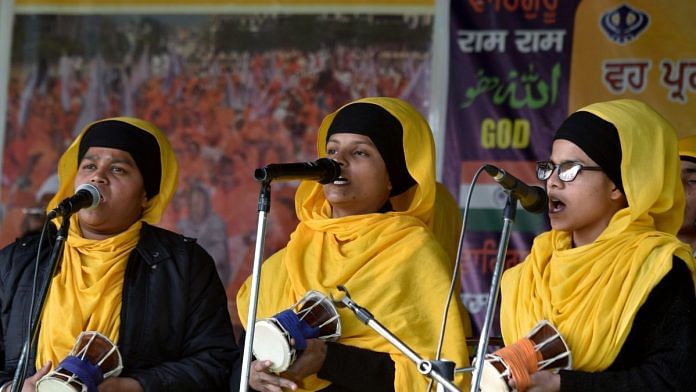Within these overtures at creating a modern egalitarian identity for Sikh women and attempts to root it within the tenets of Sikh religion while also not disrupting the existing social structures, was born the blueprint that continues to inform Sikh female identity. The contradictory pulls inherent in the situation were palpable in many of the role constructions that emerged. These were most apparent in the suggested gender equations within conjugal and familial settings. Anshu Malhotra quotes extensively from the Khalsa Tract Society set up in 1894 to promote the objectives of the Singh Sabha movement. The ideal Sikh way of life portrayed in these, by default or design, promoted conservative role models for Sikh women. Many of the stories published in the tracts were clearly to reinforce subordinated behaviour patterns. While the Singh Sabha movement shunned the Vedic symbols of exalted womanhood, it continued to use mythological figures euologising women’s commitment to home and husband.
The Khalsa Tract was supplemented by other reformist literature, which too followed the same line. The ideal daughter-in-law in Mohan Singh Vaid’s novel, for instance, is Agya Kaur or the obedient one (Malhotra 2002: 138–139). Numerous articles stressed on the three bhabas (the three ‘b’s) as the pillars of a happy married life—Bhuli ji, Bhala ji, Bhana rab da ji (My mistake, As you wish, God’s will)—were posited as tenets which ensured success in the marital home (Malhotra 2002: 131). The Khalsa Tract Society’s successful pamphlet Patibrat Dharm ran into more than five editions (Malhotra 2002: 121). Thus, while on one hand the Sikh woman was being structured within the tropes of the brave warrior woman and the one whose service extended to public spheres, on the other hand, she was also being bombarded with messages in print of what an ideal Sikh woman should be like. One of the most enduring images which Sikh women came to associate with their own identity was that of Mata Sahib Kaur, wife of Guru Gobind Singh, adding patasas (sugar puffs) to the initiation amrit, thus adding sweetness to the martial Khalsa identity. The emphasis was on the ability to somehow influence the public domain from within the precincts of home and family.
An important part of the Singh Sabha movement was to bring women into the ambit of the distinct Sikh religious identity, and to construct them as different from a diffused Punjabi female identity. This was to have a long-term impact upon how the Sikh woman would be perceived in times to come, and how it would place her within mainstream society. It would also give the Sikh woman a unified recognisable identity. All reform movements of the time took steps to wean women away from common cultural practices and to bring them under the ambit of new traditions. Like the Arya Samaj ordained the Yajnopavit ceremony for girls, the Sikh reformers reaffirmed practices started in the time of Guru Gobind Singh. Sikh men and women were encouraged to take amrit, wear the five ‘K’s and participate in amrit sanskar (baptism) ceremonies performed in gurdwaras. Sikh prayer routines or nitnem were prescribed for them. Salwar kameez and dupatta became the Sikh woman’s dress code, identifiable across caste and class. Sikh women were now given names chosen from Guru Granth Sahib, which are unisex. They were encouraged to use ‘Kaur’ against their name instead of caste verifiers.
These changes were not always readily accepted by Sikh women entrenched in the common cultural spaces, which criss-crossed between religions and castes. Many times, they had to be ‘coaxed and coerced into identifying with new religious causes’ (Malhotra2002:168–169). Among Khatris, both Hindus and Sikhs had traditionally married their daughters into each other’s families. However, with the Singh Sabha movement carving out a distinct Sikh identity, Sikh women were asked to desist from following Hindu rituals. Women resented these injunctions and the shifting expectations within the two communities; vrat (fasting), an important part of Hindu female custom, was banned in the new Sikh code of conduct, leading to rifts within families and a forceful implementation of the same by men. Shauna Singh Baldwin’s novel What the Body Remembers (2000) gives a perceptive account of how a woman in a Sikh home has to give up her Krishna idol and the ritual of sandhya when the man of the house decides to proclaim his Sikh identity and has his home purified with akhand path. The political undercurrents, which were the impetus for the male members to adopt exclusive identities, were not always cognisable to the women impacted. While some willingly joined the change, the shift was difficult for others.
 This excerpt from The Sikh Next Door: An Identity in Transition by Manpreet J Singh has been published with permission from Bloomsbury India.
This excerpt from The Sikh Next Door: An Identity in Transition by Manpreet J Singh has been published with permission from Bloomsbury India.



